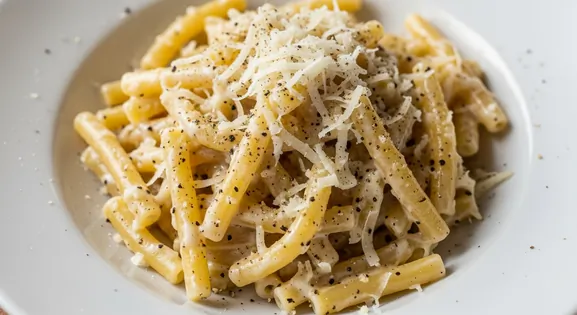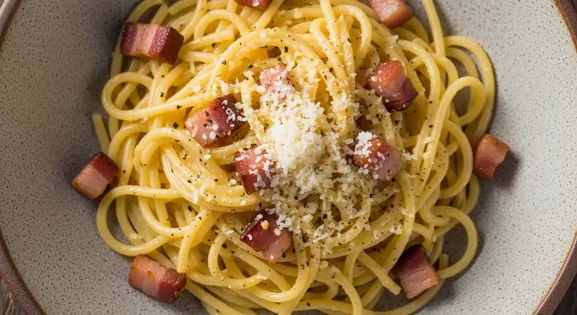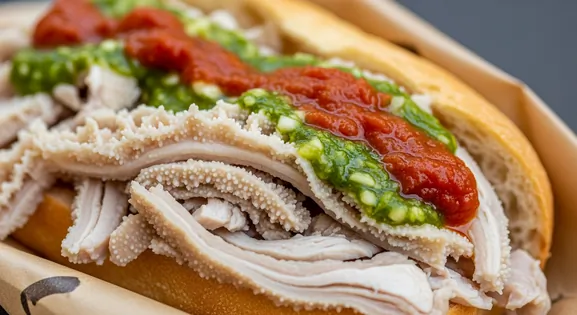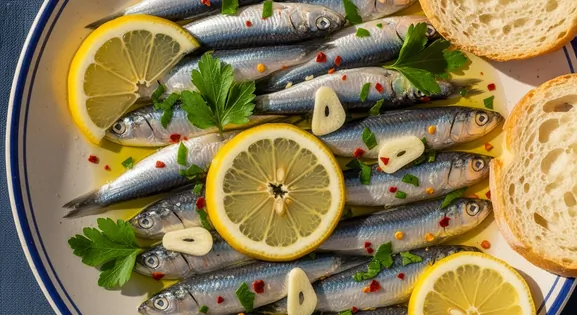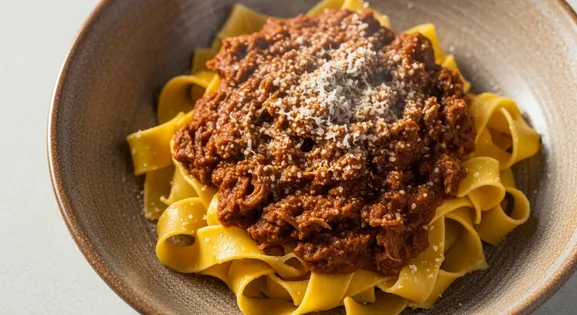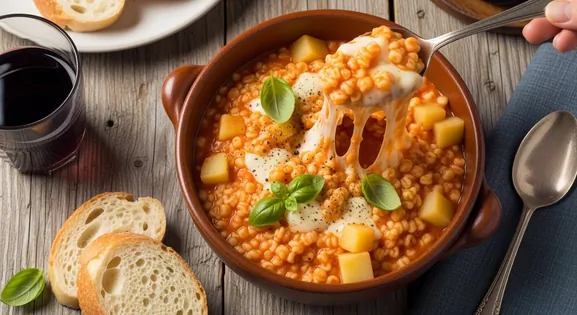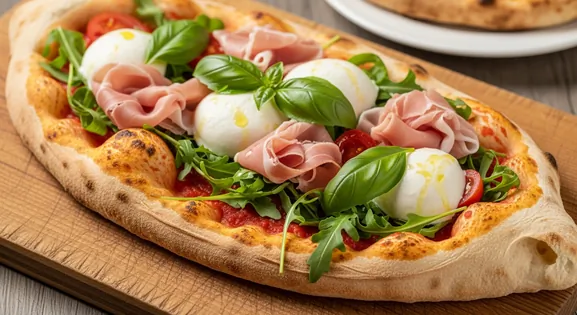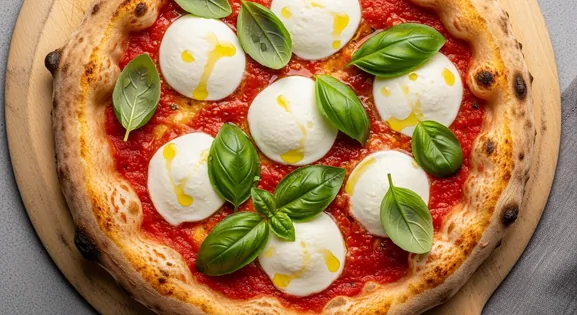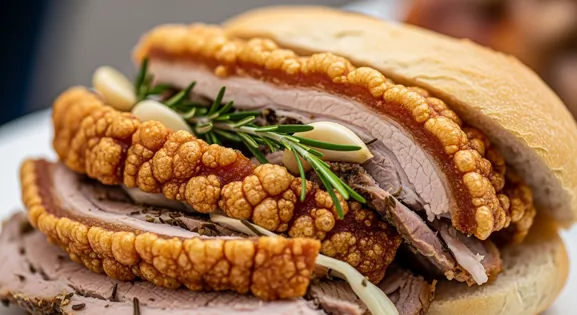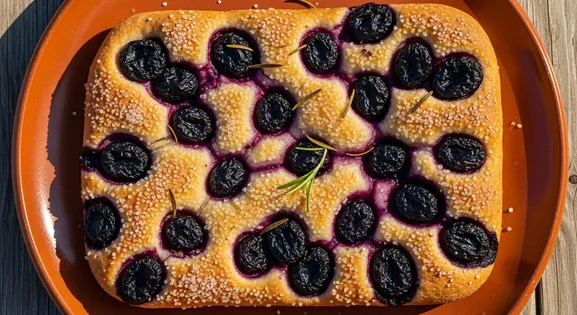Finocchiona in Italy: A Complete Food Lover's Guide
Finocchiona
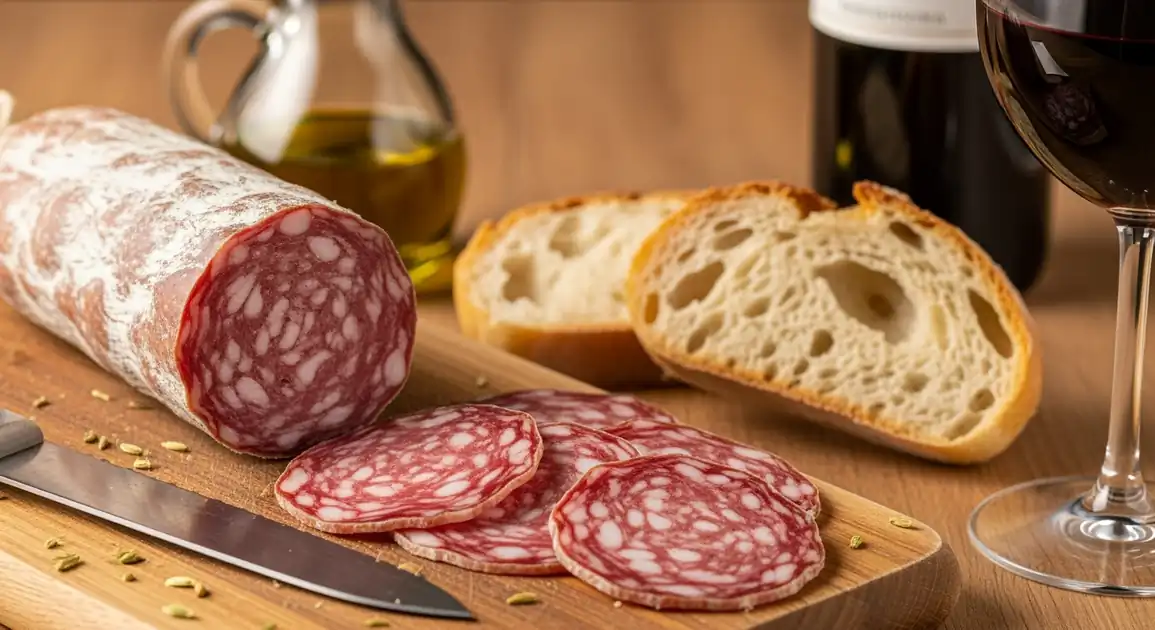
What is Finocchiona?
Finocchiona is a distinctive Tuscan salami characterized by its generous use of fennel seeds (finocchio in Italian), which impart an aromatic, anise-like flavor to the meat. This traditional cured pork product features a coarse grind, visible white fat marbling, and a softer texture than many other salamis. Protected by IGP (Indicazione Geografica Protetta) status, authentic finocchiona represents centuries of Tuscan culinary heritage and craftsmanship.
A Traveler's Guide to Authenticity
What to Look For
-
IGP certification (Indicazione Geografica Protetta)
This designation guarantees the salami has been produced according to traditional methods in the specific geographic region of Tuscany, ensuring quality and safety standards.
-
Clean, consistent appearance without discoloration
The meat should be ruby-red to burgundy with white fat marbling. Avoid products with green, gray, or unusually dark spots, which may indicate spoilage.
-
Pleasant, fennel-dominant aroma
Fresh finocchiona should smell aromatic with prominent fennel notes. Any sour, ammonia-like, or rancid odors indicate the product has spoiled.
-
Purchased from reputable vendors
Buy from established salumerie, market vendors specializing in cured meats, or directly from producers who can verify their production methods and ingredients.
What to avoid
-
Yellowish or gray fat
Discolored fat indicates oxidation and potential rancidity. Fresh finocchiona should have white, clean-looking fat.
-
Sticky or slimy surface
A slimy texture indicates bacterial growth and spoilage. The surface should be dry to slightly moist but never sticky.
-
Unusually cheap finocchiona
Authentic quality finocchiona requires good meat, proper aging, and skilled craftsmanship. Suspiciously low-priced products may use inferior ingredients or improper processes.
-
Excessive mold beyond white powdery coating
While some white powdery mold is normal on the casing (and safe), green, black, or excessive mold growth indicates improper aging or storage.
How to Order Finocchiona
The Perfect Accompaniments
Tuscan Bread (Pane Toscano)
bread
Unsalted, crusty Tuscan bread is the ideal accompaniment, providing a neutral base that allows the rich, fennel-infused flavors of the finocchiona to shine without competing with saltiness.
Chianti Wine
wine
A medium-bodied, dry red wine from the Chianti region of Tuscany, with its characteristic notes of cherry and violet, complements the savory and aromatic profile of finocchiona beautifully, cutting through its richness.
Explore Finocchiona in Detail: City Guides
Discover where to find the best Finocchiona and learn local tips in these cities:
The Story Behind the Dish
Finocchiona's origins date back to the Middle Ages in Tuscany, where fennel seeds were cleverly used to mask the flavor of pork that wasn't perfectly fresh, as fennel grew abundantly in the Tuscan countryside. Legend claims that a thief at a fair near Prato stole a salami and hid it in a fennel field, accidentally creating the first finocchiona when the meat absorbed the herb's flavor. By the Renaissance, it had become a valued delicacy, even mentioned in Boccaccio's Decameron. In 2015, it received IGP status, protecting its traditional production methods.
The Art of Preparation
Traditional finocchiona preparation begins with selecting quality cuts of pork (typically shoulder and belly) and fat, which are coarsely ground and mixed with fennel seeds, salt, pepper, and sometimes garlic and red wine. The mixture is stuffed into natural casings and tied by hand. Unlike many salamis, traditional finocchiona often doesn't use nitrates or nitrites for preservation, relying instead on the natural antimicrobial properties of fennel. The salami is then aged in temperature-controlled rooms for several months, during which it develops its characteristic flavor and texture.
Key Ingredients of Finocchiona
Pork Shoulder and Belly
These cuts provide the ideal balance of lean meat and fat, crucial for finocchiona's characteristic texture and flavor. The quality of the pork directly impacts the final product's taste and mouthfeel.
Quality indicator: Look for ethically sourced, high-quality pork with good marbling.
Fennel Seeds (Finocchio)
The defining ingredient, these seeds impart the distinctive aromatic, anise-like flavor. They are typically lightly crushed to release their essential oils, infusing the salami with their unique fragrance.
Quality indicator: Ensure seeds are fresh and fragrant, not stale or bitter.
Salt and Pepper
Essential for curing and seasoning, salt draws out moisture and preserves the meat, while black pepper adds a subtle spice and aromatic depth. These are fundamental to the salami's overall flavor profile.
Quality indicator: Use high-quality sea salt and freshly ground black pepper for best results.
Local Finocchiona Variations in Italy
Finocchiona IGP
The protected designation version, made according to strict regulations in specific Tuscan provinces using traditional methods and ingredients. Look for the IGP seal as a mark of authenticity.
Sbriciolona
A softer, more crumbly version of finocchiona (the name comes from 'sbriciolare,' meaning 'to crumble'). It's typically aged for a shorter period and has a higher fat content, making it spreadable on bread.
Finocchiona al Vino
A variation that incorporates Tuscan red wine (often Chianti) into the meat mixture, adding complexity to the flavor profile.
Finocchiona with Garlic
A version that includes garlic in the recipe, giving it an additional aromatic dimension alongside the fennel.
Mini Finocchiona
Smaller-diameter version that ages more quickly and offers a slightly different texture. Often preferred for personal consumption rather than commercial sales.
Dietary Information
Dietary Information
Important Note for Travelers: Your safety is our priority. Below are the common allergens associated with the traditional preparation of this dish. However, recipes and ingredients can vary significantly between establishments. Always confirm all ingredients directly with the food vendor before ordering, especially if you have a severe allergy.
Potential Allergens
Dietary Suitability
Frequently Asked Questions about Finocchiona
What is Finocchiona?
Finocchiona is a traditional Tuscan salami distinguished by its generous use of fennel seeds, giving it a distinctive aromatic flavor. It has ancient origins and is made from coarsely ground pork, fat, fennel seeds, salt, and pepper. The meat is stuffed into casings and aged for several months, resulting in a flavorful, soft-textured salami with visible white fat marbling.
What does Finocchiona taste like?
Finocchiona has a savory, slightly sweet flavor profile dominated by the distinctive anise-like taste of fennel seeds. The meat is rich and aromatic with a soft, moist texture that melts in your mouth. It's less acidic than many other salamis, with a pleasant balance between the fat, meat, and spices. The fat content contributes to its smooth mouthfeel and helps carry the fennel flavor.
Is Finocchiona suitable for consumption?
The curing and aging process of finocchiona creates an environment that discourages harmful bacteria. Quality finocchiona from reputable producers adheres to stringent hygiene standards. Look for the IGP (Protected Geographical Indication) label for assured quality. As with any cured meat, individuals with specific dietary concerns, such as pregnant women, immunocompromised individuals, and young children, should consult with a healthcare professional regarding uncooked cured meats.
How can I tell if Finocchiona is good quality?
High-quality finocchiona has a balanced fat-to-meat ratio with white fat that looks fresh (not yellow or gray). The meat should be ruby-red to burgundy with visible fennel seeds distributed throughout. The aroma should be pleasantly fennel-forward without any sour or ammonia notes. Quality finocchiona is slightly soft to the touch (not rock-hard or too mushy). The IGP certification guarantees authentic production methods from the traditional Tuscan region.
Is Finocchiona gluten-free?
Traditional finocchiona is naturally gluten-free, made from pork, fat, fennel seeds, and spices. However, some industrial producers might add gluten-containing preservatives. If you have celiac disease, it's best to ask specifically or look for products labeled 'senza glutine' or purchase from artisanal producers who confirm ingredients.
What's the difference between Finocchiona and regular salami?
Finocchiona differs from regular salami primarily in its use of fennel seeds, which give it a distinctive anise-like flavor. It also tends to have a coarser grind, softer texture, and higher fat content. Traditional finocchiona often doesn't contain nitrates or nitrites. Historically, fennel was used to mask flavor, but today it's a prized ingredient.
Expert How-To Guides about Finocchiona
How to Spot Quality Finocchiona
Learn to identify the characteristics of excellent finocchiona to ensure you're purchasing the best product.
- Look for the IGP (Indicazione Geografica Protetta) label, which guarantees authentic production methods from the traditional Tuscan region.
- Examine the color: The meat should be ruby-red to burgundy, and the fat should be white (not yellowish or gray).
- Check for visible fennel seeds distributed throughout the salami.
- The casing should be clean and free from excessive mold spots (a light white powdery coating is typical and indicates proper aging).
- Feel the texture: Quality finocchiona should be slightly soft to the touch, not rock-hard or too mushy.
- Smell it: The aroma should be pleasantly fennel-forward without any sour or ammonia notes that could indicate spoilage.
How to Serve and Store Finocchiona
Maximize the flavor and extend the shelf life of your finocchiona with proper serving and storage techniques.
- Serve at room temperature: Remove finocchiona from refrigeration 15-30 minutes before serving to enhance its flavors and soften the texture.
- Slice it thinly: Use a sharp knife to cut thin slices against the grain for the best texture.
- Pair appropriately: Serve with unsalted Tuscan bread, mild cheeses like pecorino toscano, and a glass of medium-bodied Tuscan red wine like Chianti.
- Store properly: Keep unopened finocchiona in a cool, dry place. Once opened, wrap in parchment paper (not plastic) and refrigerate.
- Bring to room temperature before each serving for optimal flavor.
- Consume opened finocchiona within 7-10 days for best quality.
Our Commitment to Quality
At Tasteplorers, our mission is to provide the most accurate and useful travel information in the world. To achieve this, all content on this site is created through our unique editorial framework. We utilize leading AI research tools, guided by our proprietary prompts, and a multi-stage validation process. This entire system is overseen by our editorial team to ensure everything we publish meets our high standards for accuracy, cultural nuance, and practical value for travelers.
Learn more about our Editorial Process and our Mission.
Countries
Explore regions
Europe
Discover Europe's diverse culinary landscape, from Mediterranean flavors to hearty Alpine fare. Learn to navigate markets, decode menus, and eat like a local.
Latin America & Caribbean
Discover the vibrant cuisines of Latin America & the Caribbean. Our expert guide covers everything from Mexican street food to Peruvian ceviche and market tips.
Oceania
Explore Oceania's diverse food scene. Learn about Polynesian earth ovens, Fijian feasts, and the vibrant café culture of Australia and New Zealand.
Southeast Asia
Explore Southeast Asia's diverse food cultures from Thailand to Vietnam. Get expert tips on navigating spice levels, choosing quality vendors, and understanding the rich traditions of the region.
